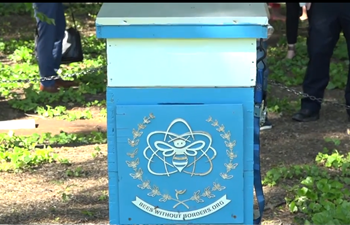LOS ANGELES, May 27 (Xinhua) -- Lava erupted from Hawaii's Kilauea volcano reached site of the Puna Geothermal Venture (PGV) plant and threatened the nearest well 130 feet (39.6 meters) away, local media reported on Sunday.
The Hawaii News Now website reported the residents living near the 38 MW PGV received alert via text message from Hawaii County Civil Defense Agency about 6:15 am Sunday, saying lava flew into PGV property overnight.
The plant's spokesman Mike Kaleikini was quoted as saying that no release of hydrogen sulfide had been detected on the site so far, which is the biggest concern if lava were to hit the geothermal wells.
Geothermal power, which uses the natural heat of underground rocks to create electricity, is a low-carbon way to generate a relatively constant supply of electricity.
However, Art Technica website warned Sunday noon that since no modern geothermal plant has suffered lava damage, so there's no precedent for this situation and many officials are concerned the damage would result in releases of hydrogen sulfide gas, which is toxic to humans.
Geothermal wells often release small amounts of toxic hydrogen sulfide during normal operations, usually well below emissions limits set by local governments, but lava could destabilize a well and release more, the analysis said.
PGV usually provides about 25 percent of power in the Big Island, where Kilauea volcano started erupting over three weeks ago and has forced thousands people's evacuation, but the plant was taken offline after the first eruption of Kilauea.
Meanwhile, about 60,000 gallons of pentane, a highly-flammable chemical, were moved from the PGV site early this month. Pentane, used as a "working fluid" for geothermal plants, has a lower boiling point than water so it heats up quickly.
PGV officials said the threat of an uncontrolled release of hydrogen sulfide would be mitigated if lava inundates their property and makes contact with their wells.













